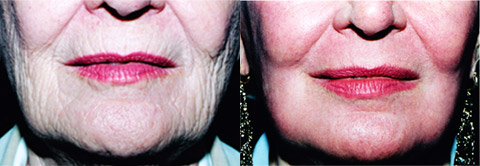
We have always been a student and practitioner of making patients’ skin look great.
Before BOTOX® and Dysport became all the rage, some cosmetic surgeons used chemical skin peel to remove facial wrinkles.
It seems like yesterday, but 25 years ago we wrote a medical text book, Chemical Rejuvenation of the Face. It was an unusual undertaking because the book was about a single, highly specialized procedure for medical students on performing the procedure for chemical skin peel to remove wrinkles and deep lines on the face.
The procedure removed:
- Aging skin
- Sun damaged skin
- Wrinkles
- Age spots
- Crow’s feet
- Other fine or very deep lines.
Chemical Skin Peel can give a 70-plus woman the smooth facial skin texture of a 25-year-old.
The book was – and is — popular with cosmetic surgeons and others because the skin that grew back after the chemical application was actually glowingly fresh 20-year-old skin. We know that because new and old skin were studied and compared under microscopes.
(Read more about chemical skin peel.)
We mention it now because we have always urged all patients to take great care under the summer sun when:
- Swimming
- Going to the beach
- Doing outdoor summer sports or activities
(See the chemical skin peel before & after pictures.)
However, our interest in skin peels did not stop with younger-looking skin. Why? Types and characteristics of skin also affect our primary offerings in rhinoplasty and procedures of the nose like:
For instance, the outcome of a rhinoplasty can depend on the thickness of the patient’s skin. Thick skin tends to conceal while thinner skin reveals everything.
We always request ethnic background information because a great deal of skin concerns regarding cosmetic plastic surgery is revealed through:
- Heritage
- Race
- Ethnic identities
Our office uses a two-page form asking how a patient’s skin has reacted to:
- Past skin treatments
- Skin unduly sensitive to sun
(Quick aside:Read about the most wrinkled U.S. cities)
We’re even interested in the racial identities of both sets of grandparents. In medical school, instructors remind students over and over, “Get to know the patient.”
By the same token, we urge patients to reveal all they can about:
- Skin thickness
- The color of parents’ and grandparents’ skin
- The dryness or oiliness of patients’ and relatives’ skin.
Usually, the more queries asked — and fully answered — during a first meeting with any doctor, the better the chances for a good outcome of your skin procedure.

